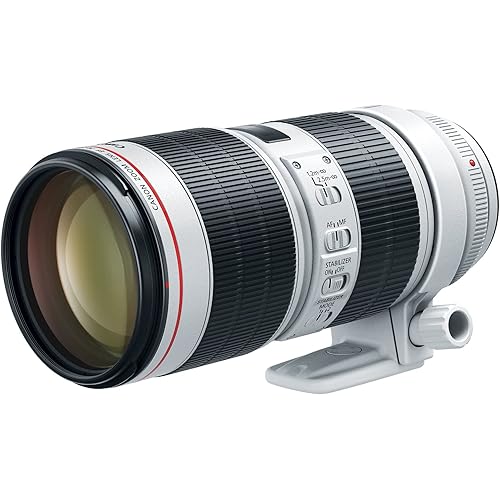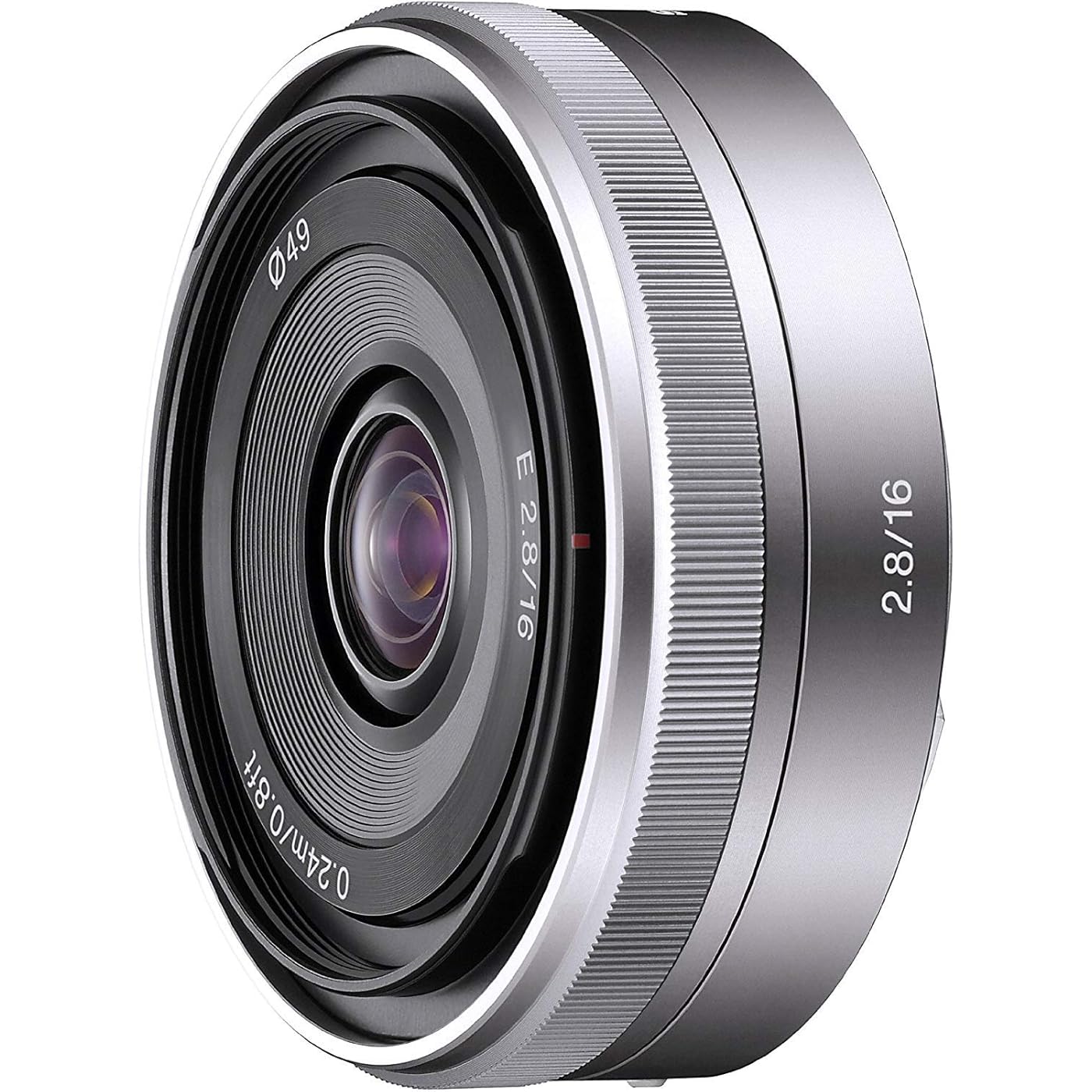
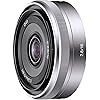

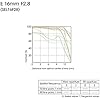
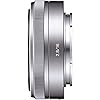
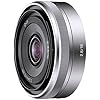
Buy Now, Pay Later
- – 6-month term
- – No impact on credit
- – Instant approval decision
- – Secure and straightforward checkout
Ready to go? Add this product to your cart and select a plan during checkout.
Payment plans are offered through our trusted finance partners Klarna, Affirm, Afterpay, Apple Pay, and PayTomorrow. No-credit-needed leasing options through Acima may also be available at checkout.
Learn more about financing & leasing here.
FREE 30-day refund/replacement
To qualify for a full refund, items must be returned in their original, unused condition. If an item is returned in a used, damaged, or materially different state, you may be granted a partial refund.
To initiate a return, please visit our Returns Center.
View our full returns policy here.
Features
- Lens not Zoomable. Footnotes:"35 mm equivalent focal length (APS-C)" and "Angle of View (APS-C)" are with interchangeable lens digital camera incorporating APS-C type image sensors.
- Minimum Focus Distance : 0.8 ft (0.24 m)
- Maximum Magnification ratio : 0.078x
- Focal Length : 16 mm. Angle of View (APS-C)- 83. 35 mm equivalent focal length (APS-C)- 24 mm
- Compatible with optional VCL-ECU1 ultra-wide converter and VCL-ECF1 fisheye converter
Description
Sony SEL16F28 16mm f/2. 8 Wide-Angle Lens for NEX Series Cameras Landscapes, architecture, snapshots . this 24 mm equivalent (35mm full frame format) E-mount prime lens can cover them all. Compact and extremely lightweight, this lens will always be ready for action without being a burden to carry. While a refined aluminum alloy exterior gives the lens a sophisticated feel, a motor on the inside delivers smooth, quiet autofocus and aperture operation that contributes to high-quality movies as well as stills. When changing your aperture to defocus the background, the light sources appear blurred. This ‘bokeh’ effect of the blurred background can be enhanced with circular aperture blades used in this lens. Conventional aperture blades have flat sides creating unappealing polygonal shaped defocussed points of light. α lenses overcome this problem through a unique design that keeps the aperture almost perfectly circular from its wide-open setting to when it is closed by 2 stops. Smoother, more natural defocusing can be obtained as a result. Aspherical lens design dramatically reduces spherical aberration while also reducing lens size and weight. Spherical aberration is a slight misalignment of the light rays projected on the image plane. This is caused by differences in refraction at different points on conventional spherical lenses which degrade image quality in large-aperture lenses. Specially shaped “aspherical” elements near the diaphragm restore alignment of light rays at the image plane, maintaining high sharpness and contrast even at maximum aperture and can also be used at other points in the optical path to reduce distortion. Well-designed aspherical elements can reduce the total number of elements required in the lens, thus reducing overall size and weight. Advanced Aspherical (AA) elements are an evolved variant, featuring an extremely high thickness ratio between the center and periphery. AA elements are exceedingly difficult to produce, relying on the most advanced molding technology to consistently and precisely achieve the required shape and surface accuracy, resulting in significantly improved image accuracy and quality. The distance encoder plays an integral part in ADI flash metering, which delivers high precision flash metering that is unaffected by the reflectance of subjects or backgrounds. The distance encoder is a lens component that directly detects the position of the focusing mechanism, and sends a signal to the CPU in order to measure distance to the subject. During flash photography, this data is very useful in calculating how much flash output is appropriate to the scene. Only the middle groups of the optical system move to achieve focus, so the overall length of the lens does not change. Other important benefits include fast autofocusing and a short minimum focusing distance. Also, the filter thread at the front of the lens does not rotate, which is convenient if you’re using a polarizing filter. 2012 Sony Electronics All rights reserved. Reproduction in whole or in part without written permission is prohibited. Sony is not responsible for typographic and photographic errors. Features and specifications are subject to change without notice. Sony, BIONZ, BRAVIA, BRAVIA Sync, Cyber-shot, Exmor, InfoLITHIUM, Memory Stick PRO Duo, Memory Stick Duo, the Memory Stick logo, Optical SteadyShot, Remote Commander, Smile Shutter, Stamina, SteadyShot, Theatre Sync, TruBlack, and Xtra Fine LCD are trademarks of Sony. Microsoft, Windows, and Windows Vista are trademarks of Microsoft Corporation. Mac OS and iMovie are trademarks of Apple Computers, HDMI is a trademark of HDMI Licensing . All other trademarks are trademarks of their respective owners. From the Manufacturer E 16mm F2.8 Wide Angle LensLandscapes, architecture, snapshots … this 24 mm equivalent (35mm full frame format) E-mount prime lens can cover them all. Compact and extremely lightweight, this lens will always be ready for action without being a burden to carry. While a refined aluminum alloy exterior gives the lens a sophisticated feel, a motor on the inside delivers smooth, quiet autofocus and aperture operation that contributes to high-quality movies as well as stills.TechnologyCircular ApertureWhen changing your aperture to defocus the background, the light sources appear blurred. This ‘bokeh’ effect of the blurred background can be enhanced with circular aperture blades used in this lens. Conventional aperture blades have flat sides creating unappealing polygonal shaped defocussed points of light. α lenses overcome this problem through a unique design that keeps the aperture almost perfectly circular from its wide-open setting to when it is closed by 2 stops. Smoother, more natural defocusing can be obtained as a result.Aspherical lens elementsAspherical lens design dramatically reduces spherical aberration while also reducing lens size and weight. Spherical aberration is a slight misalignment of the light rays projected on the image plane. This is caused by differences in refraction at different points on conventional spherical lenses which degrade image quality in large-aperture lenses. Specially shaped “aspherical” elements near the diaphragm restore alignment of light rays at the image plane, maintaining high sharpness and contrast even at maximum aperture and can also be used at other points in the optical path to reduce distortion. Well-designed aspherical elements can reduce the total number of elements required in the lens, thus reducing overall size and weight. Advanced Aspherical (AA) elements are an evolved variant, featuring an extremely high thickness ratio between the center and periphery. AA elements are exceedingly difficult to produce, relying on the most advanced molding technology to consistently and precisely achieve the required shape and surface accuracy, resulting in significantly improved image accuracy and quality.Distance encoderThe distance encoder plays an integral part in ADI flash metering, which delivers high precision flash metering that is unaffected by the reflectance of subjects or backgrounds. The distance encoder is a lens component that directly detects the position of the focusing mechanism, and sends a signal to the CPU in order to measure distance to the subject. During flash photography, this data is very useful in calculating how much flash output is appropriate to the scene.Additional FeaturesInternal focusingOnly the middle groups of the optical system move to achieve focus, so the overall length of the lens does not change. Other important benefits include fast autofocusing and a short minimum focusing distance. Also, the filter thread at the front of the lens does not rotate, which is convenient if you’re using a polarizing filter.2012 Sony Electronics Inc. All rights reserved. Reproduction in whole or in part without written permission is prohibited. Sony is not responsible for typographic and photographic errors. Features and specifications are subject to change without notice. Sony, BIONZ, BRAVIA, BRAVIA Sync, Cyber-shot, Exmor, InfoLITHIUM, Memory Stick PRO Duo, Memory Stick Duo, the Memory Stick logo, Optical SteadyShot, Remote Commander, Smile Shutter, Stamina, SteadyShot, Theatre Sync, TruBlack, and Xtra Fine LCD are trademarks of Sony. Microsoft, Windows, and Windows Vista are trademarks of Microsoft Corporation. Mac OS and iMovie are trademarks of Apple Computers, Inc. HDMI is a trademark of HDMI Licensing LLC. All other trademarks are trademarks of their respective owners.
Brand: Sony
Focal Length Description: 16mm 2.8
Lens Type: Wide Angle
Compatible Mountings: Sony E
Camera Lens Description: Compact System Camera Lens
Product Dimensions: 0.91 x 2.44 x 2.44 inches
Item Weight: 2.61 ounces
Item model number: SEL16F28
Is Discontinued By Manufacturer: No
Date First Available: May 24, 2010
Manufacturer: Sony
Frequently asked questions
To initiate a return, please visit our Returns Center.
View our full returns policy here.
- Klarna Financing
- Affirm Pay in 4
- Affirm Financing
- Afterpay Financing
- PayTomorrow Financing
- Financing through Apple Pay
Learn more about financing & leasing here.








